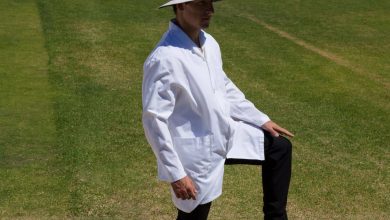Everything You Need To Know About Strikers In Soccer

Soccer is a team sport with a variety of positions and on-field responsibilities. Forward or striker is one of the most competent and sought-after roles. These are the group winners. Team players, you can count on to win games and score goals.
This is the place to be if you’re new to football and want to learn more about this position. This article gives an overview of the striker’s football position. We outline everything you need to know, from the fundamentals to some crucial abilities and strategies utilized in this position.
What function does the Football Striker Serve?
The job of the forward or striker is arguably the most difficult in all sports. Consistently posing a threat to score goals, setting up scoring opportunities, and so forth. The critical characteristics of forwarding are:
1. Forwards need to kick hard and accurately
Switching places is preferable if a striker needs more force to kick the ball accurately or with enough force. A striker must kick the ball with extreme precision.
Sometimes you only need to touch the ball once to score. These situations demand a great deal of accuracy and focus. A striker might wish to kick the ball toward the goal as soon as it reaches the goal, for instance, if the ball is crossed towards the striker’s foot. These conditions cause precision and timing if the
2. Soccer Striker Position Advice
Maintain their position. While certain players might regularly move about the field, strikers should always occupy their designated sports.
3. Keep an eye out for Defenders Trying to Take Over Position

A skilled defender will employ all their skills to divert you or influence you to leave your position. They’re free to stand still. They are keeping possession of the ball and retaining possession.
After receiving the ball, the striker may experience significant pressure from the opposition defense. With his touch, the soccer striker can easily control the ball by shielding it or keeping it out of opponents’ reach.
When they pass the ball, they must shoot into space and try to get into a dangerous position again. Spend your off-game time learning about your position. In any area, the more you know and understand, the better you become at something. Take your time and learn how to improve from the best forwards and coaches. Consider enrolling in a soccer training program like this one.
Types of Strikers in Soccer
1. Target Player:
The “target player” has slightly more distinctive characteristics than the outside striker. In addition to their typical speed in this position, they support the team’s defense.
Once a team has the ball, this type of striker can quickly switch and create dangerous situations on long runs with or without the ball. In this case, it helps if the opponent is further on the pitch. The main strength of this type of athlete is their mental and physical stamina for long runs and sprints during competition. They also benefit from extreme tactical intelligence and predictive skills.
They sense if it is worth attacking an opponent due to good timing when the opponent has lost the ball and is running behind the opponent’s defense. The simplest and most deadly one is This type of striker is rarely involved in the creative construction of goals.
They roam around the box right next to the defender, waiting for a chance to stop the move. He also charges at defenders, locks and steals the ball, and chases long passes. They are known for their finishing skills and off-the-ball activities. Good dribbling and an excellent first touch are also advantages.
2. Deep Forward
This type of forward likes to go outside the box, trade passes with more advanced midfielders, and create chances for himself and his teammates.
Opposing goals play more backward. After receiving the ball, you can turn and face the goalkeeper or find an empty teammate. If the team needs to change sides, this striker is usually penalized outside his area to receive a play and turn to the other side.
They are typically technical forwards with reasonable ball control and good long-range shooting ability. The two best players in this position were Roberto Baggio, who plays for Juventus, and Rivaldo, who plays for Barcelona.
3. Advanced strikers
They are more creative than the traditional poachers because they are involved in the setup. They remain the focus of the team’s offensive moves.
Like the poachers, they get the ball out of midfield, but they can also throw it away or pass it to a teammate. They are known for their finishing, movement, dribbling, passing, and vision.
4. Shadow forward
Teams with two forwards are most often utilized with a shadow striker. Because it plays a little behind the other forward, it is often known as the “second striker.” Shadow attackers typically attack from outside the box and are swift and light. When the team is not in possession, they often press the opponent’s defense.
Coming from behind, shadow strikers can either help the other forward or score on their own. Because they “can’t find it,” these forwards are exceedingly tricky for full-backs to handle. Since the second striker primarily runs outside the penalty area, defenders are forced to use zonal marking, which is risky when facing a speedy, cunning forward. This also raises the importance of wearing a helmet while playing. You can use decals for your football helmet to stand out.
Conclusion
When the other side has the ball, your team’s primary goal is to defend effectively while finding a means to score when you are on offense.
The role of the striker in football is simple. It’s about scoring goals. However, performing this task is not only a matter of competence; it is also a matter of consistency. As football fans, we love goals. They are the exciting “money ball” of every soccer game and usually the deciding factor. However, evaluating them means far more than simply ignoring them.
The camaraderie among teammates is what makes a game beautiful. It’s crucial in soccer to pass the ball to connect with your teammates and score goals. Any soccer match typically has two clear phases at any given time: the offensive (also known as attacking) and the defensive phases. Typically, the team in the attacking phase is the one always holding onto the ball, while the defending team is the one trying to steal it.



